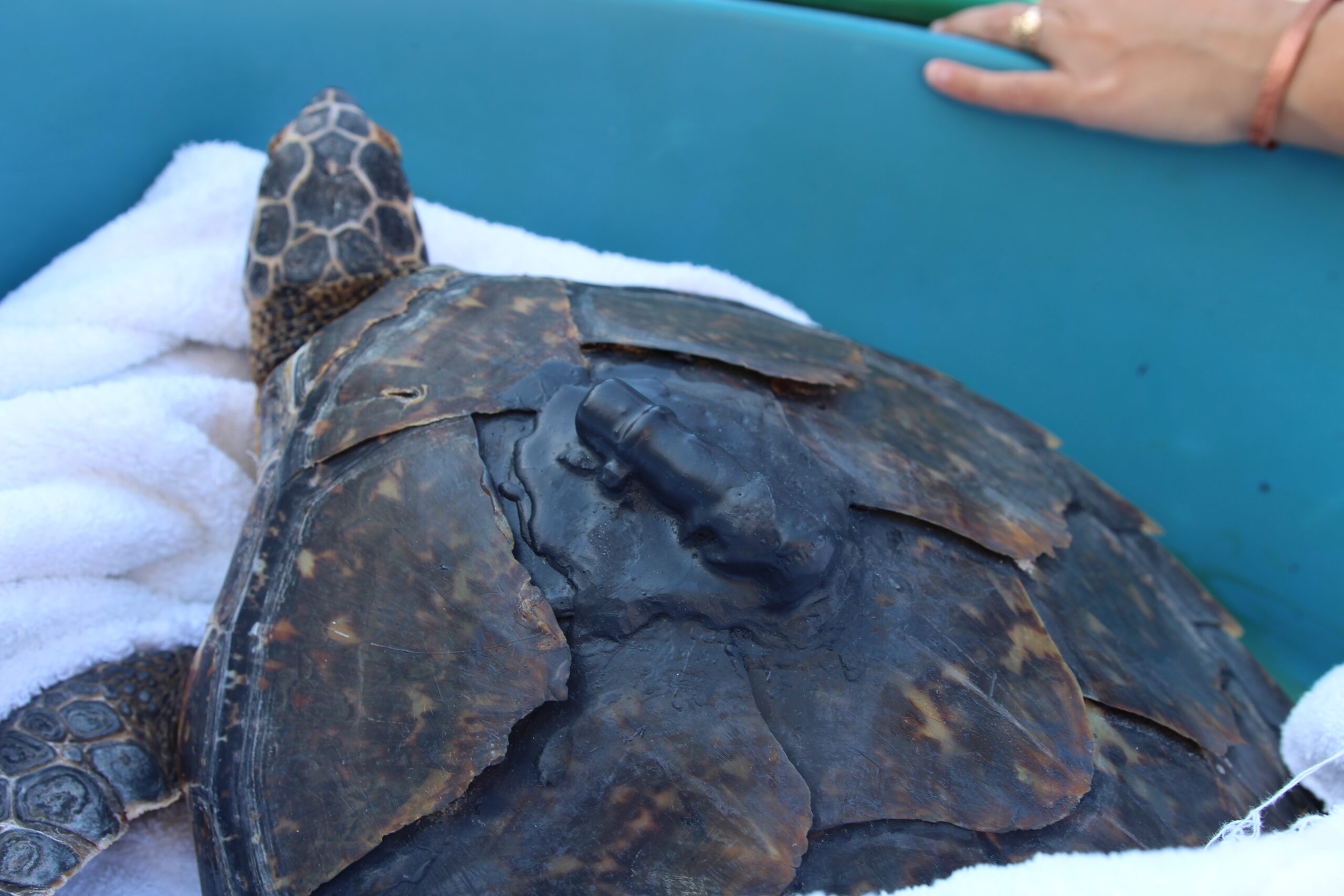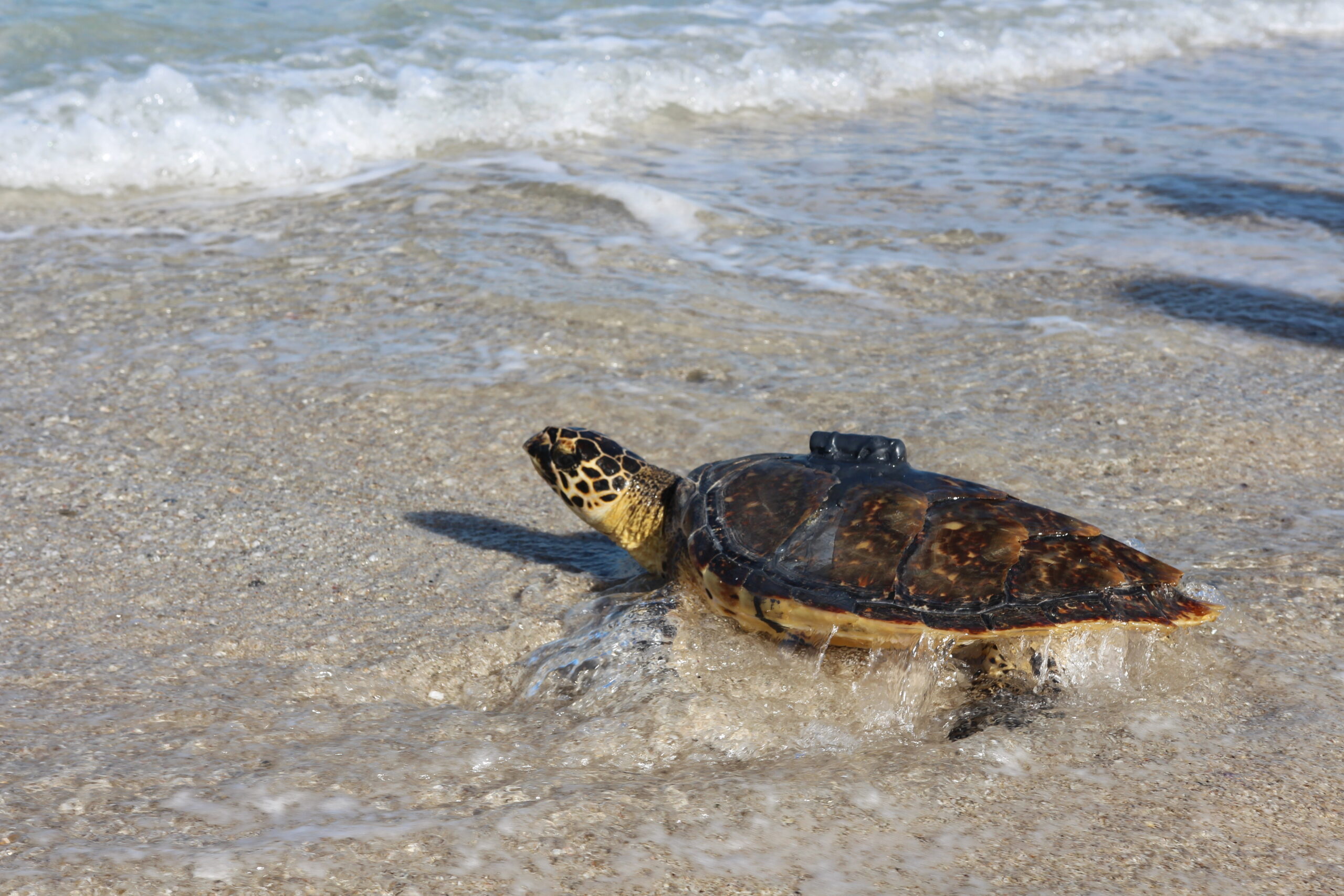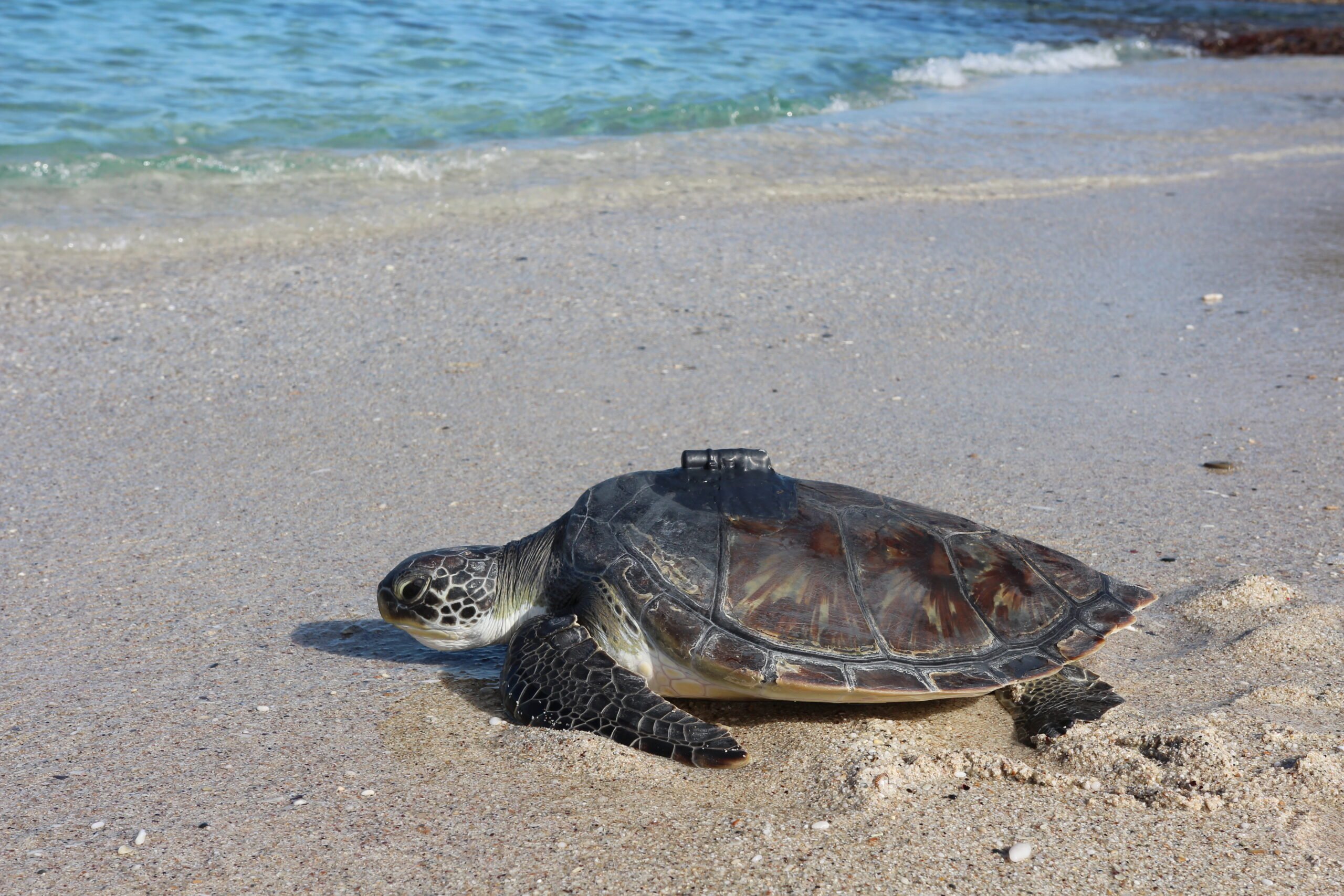Turtle-y awesome tracking with ATAP!
People have always marvelled at creatures swimming beneath the water’s surface, which must have inspired and driven the first marine biologists to learn more about undersea animals. Initially, studies might have involved looking at the diet and life-history characteristics of animals: how fast they grow, how long they live, and at what age and size they mature. This would have further developed into wondering how, why, and where they move.
Studying the movements of animals living beneath water certainly has its difficulties because watching them go about their daily activities isn’t an entirely realistic option. This is where technological developments and advancements come in, blowing the door wide open in terms of studying the movements, space use, and migration patterns of aquatic animals. While studying the movements of aquatic animals is extremely interesting in itself (who doesn’t want to know what these animals get up to?), this information is becoming increasingly important to marine science and conservation efforts related to certain species or areas.

Amber, a hawksbill turtle, ready for release with her acoustic tag in May 2023. Photo © Two Oceans Aquarium
An overlooked area of research and conservation is the behaviour of injured or ill animals that are rehabilitated at aquariums or other centres and sanctuaries. Can these animals be released back into the wild? Do they survive being released? If they survive, do they behave or move similarly to their wild counterparts? All these questions drive much of the rehabilitation work at aquariums, including South Africa’s Two Oceans Aquarium Foundation, based in Cape Town. Over the years, the Two Oceans Aquarium Foundation’s Turtle Conservation Centre has been rehabilitating turtles that have washed up on beaches, including green, hawksbill, and loggerhead turtles. Besides being ill or injured, these washed-up turtles are often juveniles that have been caught in an ocean current and have simply ended up stranded in the wrong place. However, even these youngsters need a helping hand to get their strength up before venturing back into the big blue.
Releasing an animal back into the wild takes a lot of time, resources, and effort – even more so when releasing rehabilitated animals. As such, it is good to get a better gauge of the survival of these animals post-release. This is where technology comes in, namely tracking! One of the easiest (albeit costly) ways to keep tabs on a released animal is through satellite tagging. The tag is externally attached to the turtle’s shell, and once it is sent on its merry way, almost every time it surfaces to take a breath, the tag emits a signal that records the turtle’s location. When piecing these positions together, you can see where an animal is going, how fast it is moving, and whether these movements are similar to wild-tagged turtles.

Amber the hawksbill turtle greeting the ocean after six months of rehabilitation! Photo © Two Oceans Aquarium
The Two Oceans Aquarium Foundation’s Turtle Conservation Centre has satellite-tagged quite a few turtles. Most recently, a green turtle called Bob was released on 27 January 2023. Bob’s release was made even more special as she became a Two Oceans Aquarium household name after arriving at the Turtle Conservation Centre in 2014.
While satellite tagging certainly has a host of benefits, including knowing the actual position of the turtle and tracking them thousands of kilometres across the open ocean, acoustic tagging (in addition to satellite tagging) can be equally beneficial. Acoustic tags have a battery life of up to 10 years, whereas satellite tags tend to last between two and three years. This is a crucial capability when needing to track an animal’s coastal movements for a longer time frame. However, to ensure the signals from an acoustic tag are recorded, sufficient listening power in the form of deployed acoustic receivers needs to be in place. Luckily, the Acoustic Tracking Array Platform (ATAP) meets these requirements, providing a nationwide network of acoustic receivers covering approximately 2200km of the inshore environment of the South African coastline.
Acoustic tags transmit a high-frequency noise, or sound signal, between 20 and 180 seconds. These signals can be heard as far as half a kilometre away by acoustic receivers, pieces of equipment anchored to the sea floor or placed in estuaries. Receivers record the sound signals with the date, time, and unique ID code of the tag that passes it. Therefore, when the acoustically tagged turtles swim past one of the many receivers from False Bay to Ponto do Ouro in Mozambique, their tags’ signals will be picked up and ATAP can access this information.

Coral, a green turtle, inching towards the waves in De Hoop MPA on the day of her release. Photo © Two Oceans Aquarium
The ATAP has been working with the Two Oceans Aquarium Foundation’s Turtle Conservation Centre, donating some tags towards the rehabilitated turtle work. These tags were attached to not one but five turtles who were released in May 2023 at the De Hoop Marine Protected Area (MPA). These were green turtles Amigo, Coral, and Zelena, and hawksbill turtles Siriti and Amber.
Why the De Hoop MPA, which is situated on South Africa’s southern coastline? Firstly, it was declared an MPA in 1985, so has been a valuable MPA for almost 40 years. De Hoop is managed as a completely restricted area (i.e., “no take”), allowing marine wildlife to flourish and showcasing the effectiveness of such MPAs. Its value also lies in the MPA’s contribution to turtle conservation. There have recently been aerial sightings of foraging turtles in both the seagrass beds and surf zone of the MPA, and several of the turtles received by the Turtle Conservation Centre were stranded in the shallows of this region. The most famous of the “De Hoop turtles” is Bob!
To record the signal that the acoustic tags give off, there are at least six receivers deployed (fixed on the seafloor) within the De Hoop MPA, with several others adjacent on either side of the area. The data from these receivers will be downloaded in September 2023, giving us an in-depth look at the turtles’ movements since their release, but for now, we are unsure of how long these turtles remained in the De Hoop MPA before potentially moving elsewhere. However, any data collected will provide new insights into the coastal movements of turtle species occurring in South African waters. It will also provide groundwork and understanding for future turtle releases by the Turtle Conservation Centre, particularly hawksbill and green turtles, which are very coastal during the juvenile stage.
Talitha Noble, Conservation Manager at the Two Oceans Aquarium Foundation’s Turtle Conservation Centre, summed up this work beautifully:
